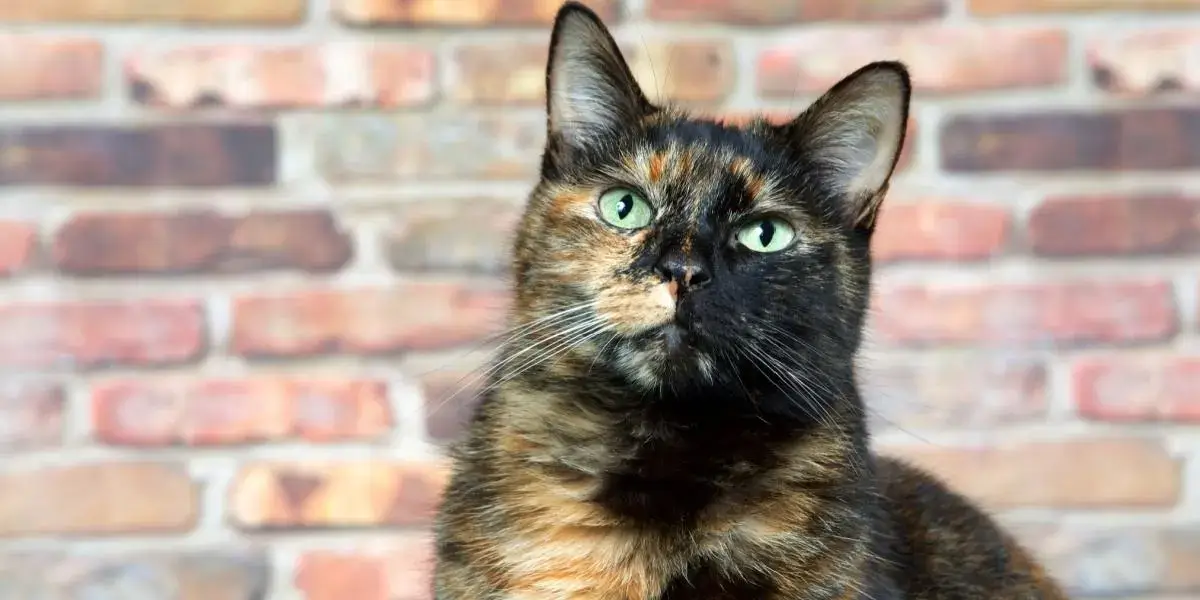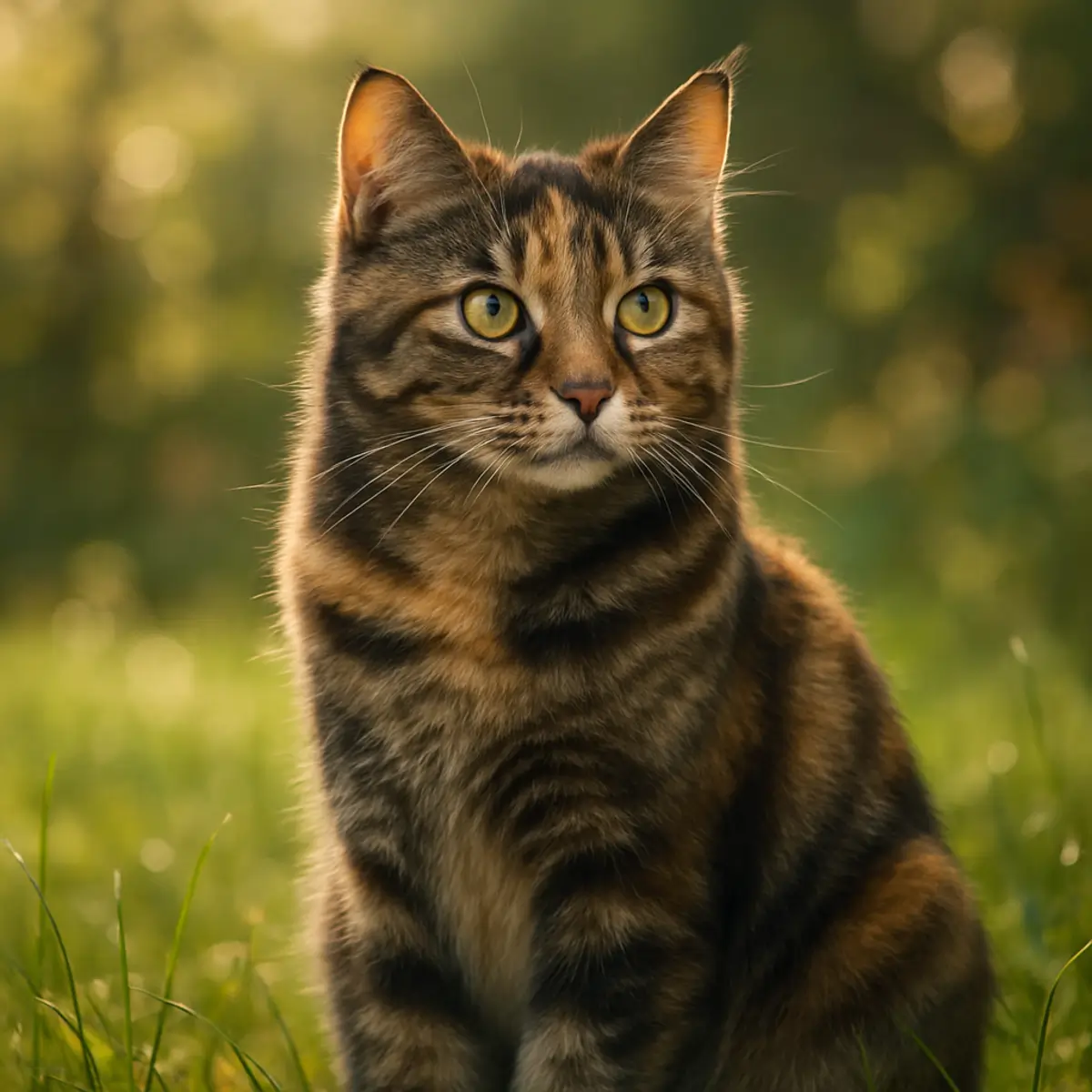Introduction
The torbie cat combines the best features of both tortoiseshell and tabby patterns, creating one of the most visually striking felines you’ll encounter. Despite their growing presence in homes worldwide, many cat lovers still misidentify these unique animals or overlook them entirely. With their distinctive tabby stripes overlaid on tortoiseshell coloring, torbie cats represent a fascinating genetic marvel that deserves more recognition in the feline world.
If you’re looking to adopt a torbie cat, you’ll find they have distinctive personalities often described as spirited and independent. Their complex coat patterns are as unique as fingerprints, with no two torbies looking exactly alike. Throughout this article, we’ll explore everything that makes these patterned felines special, from their genetic makeup to their distinctive behaviors.
Table of Contents
What Makes a Torbie Cat Unique
Not a breed, but a pattern
The term “torbie” isn’t a breed designation but rather describes a specific coat pattern. This name cleverly blends “tortoiseshell” and “tabby,” highlighting the unique combination of these two distinctive appearances. Torbies can appear in various breeds, including American Shorthair, British Shorthair, Cornish Rex, and Maine Coon. Their special appearance is simply a coat variation that can manifest in many purebred and mixed-breed cats.
Understanding that torbies represent a pattern rather than a distinct genetic lineage helps explain why they exhibit such diverse personalities. While some cat owners report behavior traits often called “tortitude” – suggesting assertiveness and independence – these characteristics vary widely among individual cats.
How torbie differs from tortie and tabby
The tortoiseshell tabby pattern creates a unique and complex coat appearance that sets torbies apart from both tortoiseshell and tabby cats. While tortoiseshell cats display patches of black and orange without striping, and tabby cats show distinctive striped or spotted patterns, torbies combine these features in one striking package.
The key distinction in identifying a torbie lies in examining the black portions of their coat. In pure torties, these black areas remain solid, whereas in torbies, the black areas display tabby striping. Additionally, torbies often feature:
- Marbled or striped effects throughout their coat
- Dark spots against lighter backgrounds
- The classic tabby “M” marking on their forehead
- Patches of red or cream colors integrated with tabby markings
Some torbies even display white areas if their base pattern includes calico elements. This intricate combination makes each torbie cat visually unique – no two torbie patterns are exactly alike.
Why torbies are so rare
Torbies are predominantly female due to their unique genetic makeup. Their distinctive coat pattern results from specific genetic factors that must align precisely. The rarity of torbie cats stems primarily from their complex genetic requirements.
In fact, male torbies are exceptionally uncommon – according to some reports, as low as 1 in 3,000 to 10,000 cats. This extreme rarity occurs because males typically have only one X chromosome, making the simultaneous expression of multiple color genes nearly impossible except in cases of rare chromosomal conditions.
The torbie pattern is considered one of the least common among the five tabby variations. Their unique genetic requirements and the intricate process of X-inactivation (where one X chromosome randomly “shuts off” in different cells) create their mosaic-like coats. This genetic lottery makes each torbie truly one-of-a-kind, adding to their appeal among cat enthusiasts.

The Genetics Behind the Torbie Coat
X chromosomes and coat color
The foundation of the torbie cat pattern lies in genetic coding carried specifically on the X chromosome. The genes responsible for orange versus black/brown fur colors exist exclusively on this chromosome. For a cat to display both orange (pheomelanin) and black (eumelanin) colorations simultaneously, it must possess two different variants of these color genes.
Unlike most physical traits, coat color in cats doesn’t follow simple dominant-recessive patterns. Instead, when a female cat inherits different color genes on her two X chromosomes, both colors appear through a process called X-chromosome inactivation or “mosaicism.” During early development, one X chromosome in each cell randomly deactivates, creating patches of fur expressing either orange or black.
Why most torbies are female
Genetically speaking, the torbie pattern almost exclusively appears in female cats because they naturally possess two X chromosomes (XX). Male cats typically have only one X chromosome paired with a Y chromosome (XY), which lacks color genes altogether. Consequently, standard male cats can only carry one coat color gene—either for orange or black/brown—never both simultaneously.
This genetic reality explains why:
- Female cats can be orange, black, or torbie
- Normal male cats can only be orange OR black, never both
Klinefelter syndrome in rare male torbies
Yet, on extremely rare occasions, male torbie cats do exist. These uncommon males have a chromosomal abnormality called Klinefelter syndrome, where they possess an extra X chromosome (XXY). This genetic anomaly allows for the tortoiseshell pattern overlaid with tabby markings.
The main differences between torbie and tortie cats lie in their coat patterns. Male torbies occur at extraordinarily low rates—approximately 1 in 3,000 tortoiseshell/torbie cats are male. Furthermore, virtually all male torbies are sterile due to their chromosomal irregularity. Research indicates these cats often experience other health complications, including abnormal testicular development.
Personality Traits of Torbie Cats
What is ‘tortitude’?
The term “tortitude” refers to the distinctive personality often associated with tortoiseshell-patterned cats, including torbies. This behavioral phenomenon refers to their reputation for being strong-willed, fiercely independent, and occasionally hot-tempered. According to a 2016 study from the University of California-Davis, tortoiseshell and similarly-patterned cats do indeed display more challenging behaviors toward humans, including hissing, swatting, and biting.
Many torbie owners report their cats display classic tortitude traits. Jackson Galaxy, renowned cat behaviorist, confirms, “In my experience, tortitude is a very real thing,” noting that these cats appear more “energetically sensitive” than others. Feline veterinarian Dr. Fern Slack colorfully describes torties as “the redheads of the cat world—beautiful, but short-tempered and quick to wrath.”
Are torbies more vocal or independent?
Torbie cats typically exhibit a fascinating balance of traits. They tend to be highly vocal, frequently communicating their needs and opinions through meows, purrs, and trills. Moreover, many torbie owners report their cats demonstrate remarkable independence alongside unexpected moments of deep affection.
These cats generally form strong bonds with their families yet maintain their autonomous nature. They adore spending time with their humans and are highly interactive and enjoy spending time with their human companions. However, they simultaneously display strong independence, sometimes described as “sassy” or “strong-headed.”
How breed influences behavior
Although the torbie pattern may correlate with certain personality traits, experts emphasize that breed plays a more significant role in determining behavior than coat color. As one source explicitly states, “The breed impacts the personality of the cat more than the tortoiseshell color.”
A 2019 Finnish study found that nearly half of behavioral differences among cats are inherited, suggesting genetic factors beyond coat color substantially influence personality. This explains why individual torbie cats may display varying levels of “tortitude” – even those showing similar coat patterns can have dramatically different temperaments based on their breed background.
How to Tell a Torbie from Other Cats
Torbie vs Tortie
Fundamentally, both torbies and torties share the black and orange coloration, but the key difference lies in the patterning. In pure tortoiseshell cats, the black portions remain solid without stripes. A torbie cat can be identified by the tabby markings within the black areas of their coat. When examining a suspected torbie, focus on the black patches – if they contain stripes or swirls, you’re looking at a torbie rather than a tortie.
Torbie vs Calico
While calico cats showcase distinct patches of white, orange, and black in a random pattern, torbies may or may not include white areas. The defining characteristic of a torbie is the tabby striping overlaid on the tortoiseshell pattern. If a calico cat also has tabby markings, it might be referred to as a “caliby” – essentially a calico with tabby features.
Understanding the differences between torbie and tortie cats helps in proper identification. Many people confuse the tortoiseshell tabby with other cat patterns, but once you know what to look for, identification becomes much easier.
Torbie vs Tabby
Regular tabby cats typically have a consistent base color with darker markings. In contrast, torbie cats combine the classic tabby pattern with tortoiseshell coloring. This creates a more complex appearance where tabby markings appear in patches of different colors rather than throughout a uniform base coat.
Identifying torbies requires looking for tabby stripes within the tortoiseshell pattern. The presence of both orange and black areas, with tabby striping in the black portions, is the definitive sign of a torbie cat.
What is a patched tabby?
“Patched tabby” is simply another term for a torbie cat. These cats are tabbies with patches of red or cream integrated into their coat pattern. The term refers to how the different colored patches are distributed across the tabby-patterned coat.
Tips for identifying a torbie
To confirm you’re looking at a torbie cat:
- Look for the distinctive tabby “M” marking on the forehead
- Check for tabby striping within the black areas (the key identifier)
- Notice patches of red or cream colors integrated with tabby markings
- Observe if there are marbled or striped effects throughout the coat
- Remember that nearly all torbies are female due to genetics
When people ask what is a torbie cat, I explain it’s not a breed but a unique coat pattern. Primarily, torbies are described as “tortie AND tabby” – displaying the genetic characteristics of both pattern types simultaneously.

Conclusion
Torbies truly represent one of the most fascinating genetic marvels in the feline world. Throughout this article, we’ve explored how these cats aren’t simply another breed but rather showcase a remarkable coat pattern that blends tortoiseshell and tabby characteristics. Their uniqueness extends beyond their striking appearance, though their distinctive tabby striping overlaid on tortoiseshell coloring certainly captures attention.
Female cats dominate the torbie population due to the complex genetic requirements involving X-chromosome inheritance. Male torbies exist only through rare chromosomal anomalies, making them among the most uncommon cats you might encounter. This genetic lottery ensures each torbie displays a one-of-a-kind pattern, essentially wearing a coat as individual as a fingerprint.
Many cat enthusiasts consider torbies to be among the most beautiful feline coat patterns. While the famous “tortitude” may manifest as independence and occasional sass, these cats also form deep bonds with their humans. Nevertheless, breed background plays a significant role in temperament, meaning individual torbies can vary widely in behavior despite sharing similar coat patterns.
Next time you spot a cat with tabby markings intertwined with tortoiseshell coloring, you’ll recognize the special torbie pattern. Look specifically for tabby striping within the black patches – the telltale sign that distinguishes torbies from their tortie cousins. Despite their relative rarity, these captivating felines deserve appreciation for both their genetic complexity and charming personalities.
